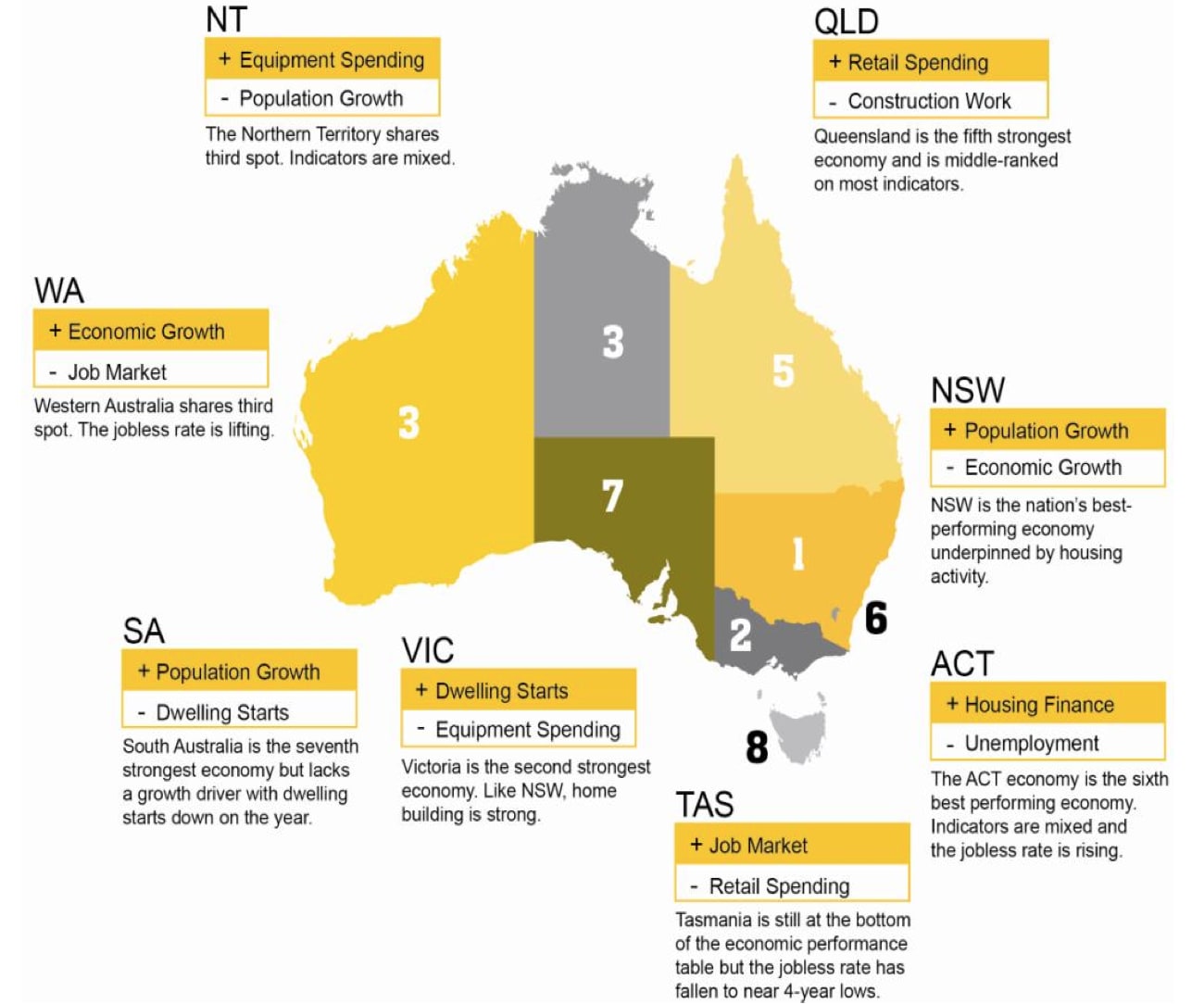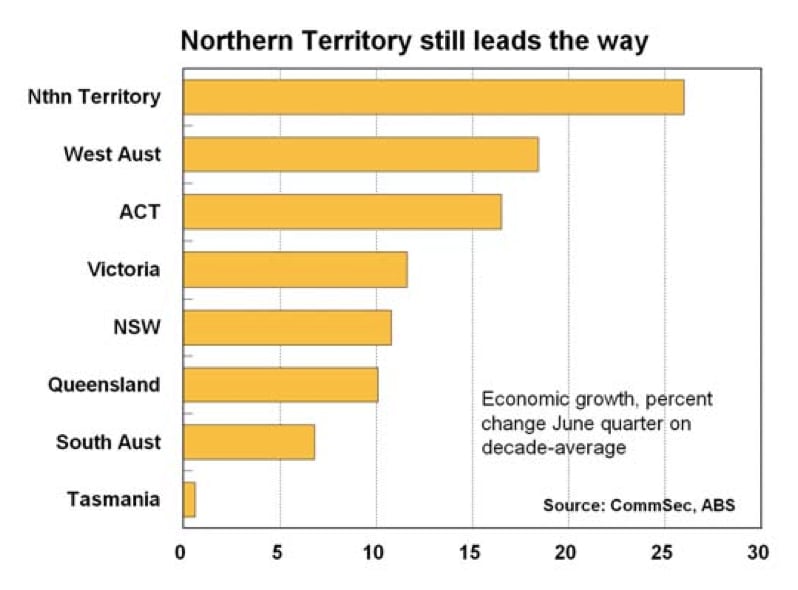State of the States: CommSec's Craig James
GUEST OBSERVER
How are Australia’s states and territories performing? Each quarter CommSec attempts to find out by analysing eight key indicators: economic growth; retail spending; equipment investment; unemployment; construction work done; population growth; housing finance and dwelling commencements.
Just as the Reserve Bank uses long-term averages to determine the level of ‘normal’ interest rates; we have done the same with key economic indicators. For each state and territory, latest readings for the key indicators were compared with decade averages – that is, against the ‘normal’ performance.
There has been little change in the latest rankings. NSW has retained top spot as the best performing economy while Victoria has consolidated second spot, with both states pushing further ahead of the other states and territories.

The next grouping of economies is the Northern Territory and Western Australia which now share third spot in the performance rankings.
And there is little to separate economies in the third grouping of state and territory economies. Queensland is fifth ranked, ahead of the ACT (sixth) followed by South Australia (seventh) and Tasmania (eighth).
NSW has retained its top rankings on population growth, retail trade and dwelling starts but now adds housing finance to the list. NSW is still second placed on unemployment and is also second strongest on equipment investment. The other rankings are: construction work (fourth) and economic growth (fifth).
Victoria has consolidated second spot on the economic performance rankings. Victoria’s main strengths are population growth, housing finance and dwelling starts (second ranked on each indicator.)
The Northern Territory remains the third ranked economy, but has fallen further behind Victoria and now shares the third ranking with Western Australia.
Northern Territory is top ranked on economic growth, business investment and construction work done. But the ‘top end’ economy is last ranked on population growth, housing finance and dwelling starts.
Western Australia is second on retail trade, economic growth and construction work, but higher unemployment (eighth ranked) has impacted housing activity.
Queensland retains fifth position on the economic performance table but it is clear that it is now in a third grouping of economies with the ACT, South Australia and Tasmania. Queensland is middle ranked on most indicators.
The ACT economy has retained sixth position on economic performance. The territory ranks third on economic growth and housing finance but is seventh ranked on three indicators.
South Australia has held seventh spot on the economic performance rankings but Tasmania is showing better momentum. South Australia does best on population growth and equipment investment (both third ranked) but is seventh ranked on three indicators.
Tasmania remains at the bottom of the Australian economic performance table. But importantly Tasmania is now top ranked on unemployment and third ranked on housing finance.
Ideally gross state product (GSP) would be used to assess broad economic growth. But the data isn’t available quarterly. Rather, state final demand (household and business spending) is added to exports less imports to act as a proxy for GSP. Exclusion of the trade sector would provide an incorrect assessment of growth for economies such as Western Australia and Queensland.
There have been no changes in the rankings on economic activity. The Northern Territory continues to lead the way, up 26 per cent above its ‘normal’ or decade- average level of output.
Next strongest is Western Australia, with output just over 18 per cent higher than the decade average level of output. Then follows ACT (up 16.5 per cent) from Victoria (up 11.6 per cent) and NSW (up 10.8 per cent).
At the other end of the scale, economic activity in Tasmania in the June quarter was just 0.6 per cent above its decade average, while South Australian activity was up almost 7 per cent on its ‘normal’ or average output over the past decade. Queensland economic activity was up by around 10 per cent on the decade average.
The ACT now has the fastest annual economic growth rate in the nation, up by 4.0 per cent on a year ago, ahead of Victoria with 3.9 per cent and NSW (1.4 per cent).
By contrast, the Northern Territory economy is down 7.4 per cent on a year ago, while Western Australian economic activity is down 2.0 per cent on a year ago with the Queensland economy down 0.2 per cent on a year ago.

Craig James is the chief economist at CommSec.
